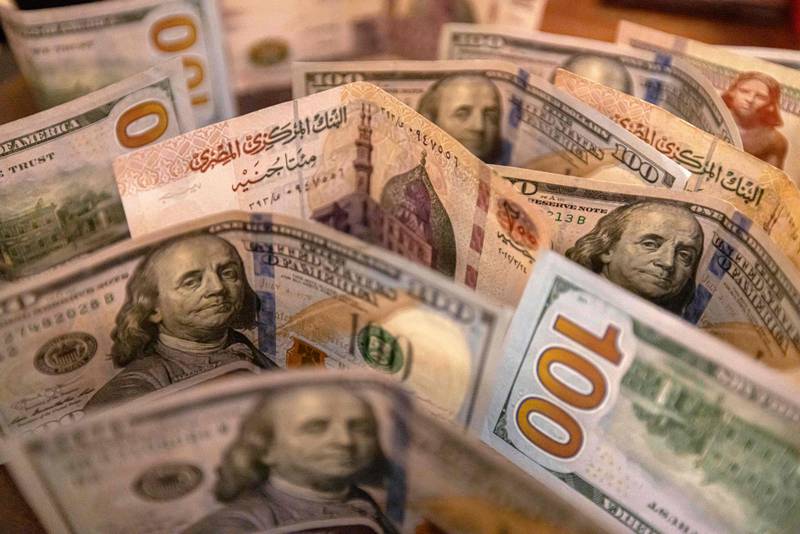Why some currencies in the Middle East are under huge pressure

Collected Image
A combination of macroeconomic and geopolitical factors is hurting several currencies in the Middle East, which have inevitably had ill effects on their countries' economies.
Currencies in the region, like those across emerging markets, have come under pressure, reflecting concerns about their respective countries' external vulnerabilities, weak economic outlook and the political and financial capacity of governments to manage crises.
Vulnerable economies have already seen their foreign reserves come under considerable pressure. Governments, however, are introducing measures to stem the trend, yet there are still many questions about if and when these currencies will be able to recover.
We take a look at some of these currencies, how they got into this situation and their outlooks.
Egyptian pound: further devaluation seen
The Egyptian pound has continued its slide against the US dollar, with analysts predicting further devaluation, as Cairo seeks to meet a key International Monetary Fund requirement for a flexible foreign exchange mechanism as part of an agreement for a $3 billion loan.
The pound, on January 4, suffered its biggest one-day slide against the US dollar, depreciating by 8 percent to 26.50 to the US dollar, which was also accompanied by a sharp increase in the interest rates on the one-year savings certificates to 25 percent issued by the two large nationalised banks.
Cairo-based Naeem Brokerage expects the pound to weaken further by another 5 percent, to about 28 pounds to the US dollar, it said in a research note on January 5.
Naeem Brokerage estimates the pound weakened by a combined 15 percent in this latest round of devaluation.
“In principle, we view the latest developments as a positive move and the right direction for the economy, as well as for the EGX [including from the perspective of a foreign portfolio investor],” it said.
“Our view is that the ongoing EGP depreciation is also indicative of the country already having secured some external support as a prelude to the move and, with one of the priorities being to clear the outstanding backlog of goods [of about $7 billion] stuck at the Egyptian ports.”
Measures such as the currency devaluation are also likely to unlock $10 billion in direct foreign inflows over the coming months from the IMF and other sources, such as direct investments from the GCC, the firm said.
“Forex inflows would be crucial in securing exchange rate stability and would almost completely eliminate the forex liquidity risk overhang that is currently keeping foreign investors away from investing into new businesses, the local stock market and Egyptian debt [T-bills and T-bonds],” it said.
Assuming the pound will be freely floated, or market-determined through the interbank system from now on, this would set the stage for substantial foreign portfolio inflows of more than $15 billion into both equity and debt by end of the year, it said.
Lebanese pound: worrying record lows
Crisis-hit Lebanon is grappling with its currency's depreciation to record lows on the parallel market, prompting the country to slash the value of its currency to 38,000 pounds to the dollar on its Sayrafa exchange platform.
The Banque du Liban has blamed currency speculation and the smuggling of US dollars outside Lebanon. The economic crisis has pushed many in Lebanon into poverty, with severe shortages of essentials including clean water, electricity and medicine.
Inflation in Lebanon increased an average of 189.4 percent year-on-year in the first 11 months of 2022, government data has shown. Lebanon is expected to post the second-highest inflation rate in the world this year, behind Sudan, according to Fitch Solutions.
Lebanon is in the grip of an economic crisis described by the World Bank as one of the worst in modern history and has failed to enforce critical structural and financial reforms required to unlock $3 billion of assistance from the International Monetary Fund.
Lebanon's economy collapsed after it defaulted on about $31 billion of eurobonds in March 2020, with its currency losing more than 90 percent against the dollar on the black market.
Iraqi dinar: sanctions bite
The value of the Iraqi dinar has further plummeted against the US dollar following new measures by the US Federal Reserve aimed at blacklisting several Iraqi banks that deal mainly with Iran. The move has led to a scarcity of hard currency supply in the Iraqi market.
One US dollar is traded at 1,580 Iraqi dinars on the street, against the central bank rate of 1,470 dinars, state news agency Ina reported.
The Central Bank of Iraq has blamed the currency drop on “adopting mechanisms to protect the banking sector, customers and the financial system, as all foreign trade requirements … are fully covered by the official price", Ina reported.
Iraq’s central bank has taken several measures to help stabilise the currency, including reducing the exchange rate for travel and ensuring a flow of dollars at the official rate.
Israeli shekel: inflation concern
The Israeli shekel declined about 12 percent against the dollar in 2022, and there are no indications that it will improve soon given that inflation in the country rose sharply to 5.3 percent in November — almost double the top end of the government’s targets of between 1 percent to 3 percent.
Source: https://www.thenationalnews.com
Tags :
Previous Story
- NMC Healthcare appoints David Hadley as chief executive
- Safanad and Global School Management to invest $200m...
- Mena economies set for fastest expansion since 2016...
- Middle East and Central Asian economies need more...
- Aramex profit grows 3% on higher revenue in...
- Middle East construction pipeline sees slight growth for...
- GCC economies set to grow at fastest pace...
- Polyethylene Pipes & Fittings Market by Trends, Key...